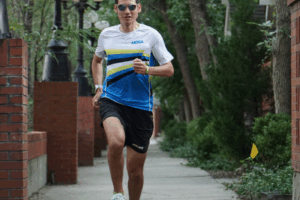Blood Clot FAQs – How are blood clots treated?
What can you tell me about the swelling/pain/ache that does not seem to go away after treatment of a blood clot?
It is common to have leftover swelling in the leg after the initial treatment of a blood clot in your leg (DVT). When you wear graduated compression stockings daily, they help increase blood flow in the legs and reduce swelling. There is a complication of DVT called post-thrombotic syndrome (PTS) that has many of the same symptoms of a DVT. After a blood clot in your lung (PE), it is common to have shortness of breath and mild pain or pressure in the area of the PE. Pain may occur in response to physical activity or when you take a deep breath. Shortness of breath should decrease with time and exercise.
What are my chances of having another blood clot?
The majority of patients do not have a repeat blood clot. However, risk is higher than for the general population whenever you had a clot. The degree of increased risk depends upon where the clot was, how many you clots you had, family history of blood clots, presence of blood clotting disorders, and any underlying medical conditions.
How do I know it isn't simply a pulled muscle?
A pulled calf muscle usually gets better in a day or two. Another sign of a DVT is bluish or reddish skin discoloration, and skin that is warm to touch. These other signs do not usually happen with a pulled muscle.
If I suspect a new clot, should I take blood thinners until I can seek medical attention?
No. Contact your doctor to make sure it is a clot. Blood thinners prevent clotting, but can cause serious bleeding, so they should not be taken without a doctor’s exam and order.
Is it necessary to be weaned gradually off blood thinners?
Blood thinners can be stopped without any change in dose. Their effect lasts only for a few days.
I felt secure when I was taking a blood thinner, and now feel worried about having another clot, now that I am off blood thinners.
This concern is common, and you should discuss your worry with your doctor. Try to concentrate on your freedom from taking pills that need blood testing. Doctors base the decision to stop blood thinners on many factors such as what caused your clot, where it happened, and what your personal and family history of clots is. There is a lot of thought in their decision.
If I have active cancer, should I take blood thinners?
Certain cancers increase the risk of a blood clot fourfold, and chemotherapy increases risk up to six fold, so preventive use of blood thinners is usually wise. Discuss this with your doctor.
Should I mention my history of DVT or PE when I am hospitalized?
Absolutely, You should tell all healthcare providers about your history of clots whether in or out of the hospital. A hospital stay of more than 3 days is one of the more common causes of a blood clot. You will likely need preventive blood thinners and compression stockings during a hospital stay.
Should I tell my dentist I'm taking blood thinners?
Tell your dentist before any procedure. This is true whenever you have any medical or surgical procedure as well.
Is it safe to exercise?
Moderate exercise such as walking or swimming is recommended. A return to your normal exercise routine depends on your physical condition before the clot and the severity and location of your clots. You should avoid any high risk sports, and wear a helmet if you choose to take part in any high risk activity, especially if you are still taking blood thinners. Exercise increases circulation, reduces symptoms of venous insufficiency and usually helps you feel invigorated. Aerobic exercise may increase lung function after a PE.
What effect does crossing my legs have on blood clot formation?
Crossing your legs interferes with circulation.
How long should I sit at one time?
No more than 2 hours at a time. Take breaks and get up and walk to keep your blood moving.
What can I do when I travel to prevent clots?
Stop every hour or so and walk for several minutes, whenever you are driving. Try to sit where you can stretch your legs (aisle seat, exit aisle, bulkhead seats, business class, etc.). Get up and walk the aisle(s) for several minutes every hour or so. Point and flex your toes and heel and move your feet in circles to get your blood flowing. It is a good idea to wear compression stockings when traveling if you have a history of a blood clot.




